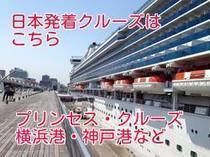Impact on the Cruise Industry
After the war, military aircraft manufacturers switched to building commercial airliners. Although overseas travel by air was not yet affordable to the average person, postwar Hollywood movies and television programs stimulated many people's "yearning" for overseas travel and changes in their own lifestyles. U.S. airlines showed a steady increase in transatlantic travel, partly because lifestyle media such as fashion, which was still a new field at the time, promoted the convenience of traveling to Europe by air and new "travel packages.
Sense of time has also changed dramatically. Transatlantic international flow of people was shifting at a rapid pace from traditional liner shipping to air travel. On the Atlantic, Pan American Airways was competing with the luxury liners connecting Europe and the U.S. mainland by sea, selling a comfortable, well-serviced in-flight atmosphere.
The advent of Pan American's round-the-world flights (1947) and the British BOAC's first flight between New York and London (1958) with the Comet, introduced in 1949, convinced the world that the jet age had arrived. (The North Atlantic shipping lines (connecting major ports in Europe and the U.S.) were also forced to withdraw from the North Atlantic shipping business, as they lost customers to jet airlines, which advertised the speed and convenience of "transportation and travel". The "Queen Mary," the queen of the Atlantic and a representative of luxury cruise ships, also sought a safe haven in Long Beach on the west coast of the United States.
The first test flight of the so-called "jumbo" Boeing 747 in 1969 and the opening of regular air routes between major U.S. cities and major European cities by Pan American in January of the following year (1970) marked the arrival of the jet travel era and the transformation of the sky into the "era of mass transportation. The air travel era was transformed into the "era of mass transportation" in the skies. The concept of market share and economies of scale in overseas travel gained ground, and this was a sign of the explosive war to attract customers centered on American airlines.
Against this backdrop, the "deregulation" led by the Carter/Reagan administrations in the U.S. gave further impetus to the competition in the skies.
President Carter signed the Airline Deregulation Act of 1978 on October 24, 1978, which was succeeded by President Reagan. In 1991, United Airlines took over Pan American's international rights, which had established itself as the leader of international flights in the U.S. airline industry, and Eastern Airlines, the leading airline on the East Coast, was absorbed by Delta Air Lines.
The airlines, as suppliers of services, are required to create new demand, and they have been working on the introduction of large individual contracts with large travel groups (including cruise lines) (such as volume fares) and the development of new services, such as more flexible pricing systems (computerization is being promoted to achieve a variety of pricing) and increased extra flights (including cruise lines). The introduction of a customer loyalty system, including a frequent flyer system, helped the company to attract a customer base and secure a repeat customer base. In terms of operations, the company introduced the "hub airport concept," which calls for economies of scale and cost reductions.
The sudden change in the environment due to deregulation of the airline industry contributed greatly to the popularization of Caribbean cruises. Cruise lines' new ways of dealing with airlines also began to affect their ability to attract passengers from all over the United States. Cruise lines began to have a significant impact on cruise operations, especially in the Caribbean. The cruise lines' new association with airlines has had a major impact on their ability to attract passengers from the U.S. and abroad.
For cruise lines targeting Caribbean "zones" (not equal to home ports), the problem became one of how to get passengers from their "home boats" (not equal to home ports) across the U.S. to their various home ports in Miami, a very important logistical strategy. Home ports, such as Miami and Fort Lauderdale, receive millions of passengers annually who embark and disembark from cruises.
Many of them are drawn from every year in the U.S. and will fly to the base port. The embarking and disembarking passengers were seen by the major airlines as "group travelers" who were a perfect fit for round-trip packages. For the airlines, the cruise lines were attractive customers because they had the habit of holding back the travelers, such as shipboard passengers and on-board employees, from booking in large numbers.
The cruise lines also exercised this "control of the air" wi, temporary flight contracts and arrangements for special bulk rates (bulk rates) and temporary charter flights, etc., to secure the "flow of people" boarding and disembarking from the ships. In cooperation with airlines, combined air travel became common, and many cruise lines built logistics that also involved airports, having in-house air ticketing systems and incorporating air fares into cruise fares.
【このカテゴリーの最新記事】
- no image
- no image
- no image
- no image
- no image
- no image




















